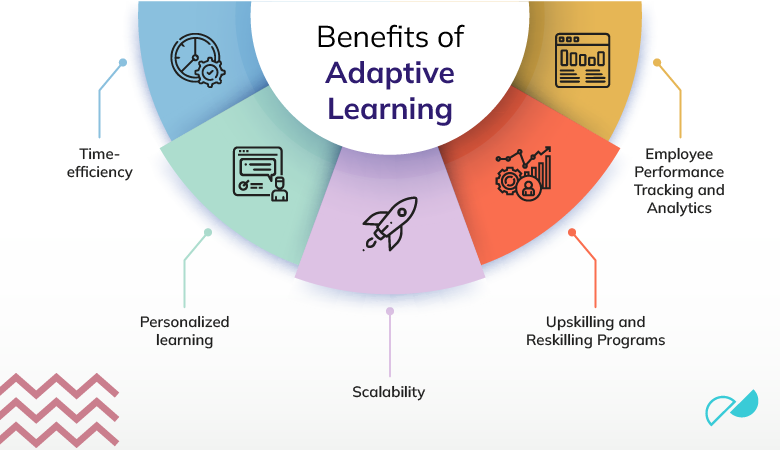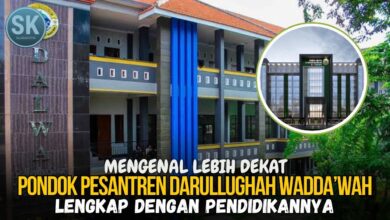How Digital-Based Adaptive Learning Models Personalize Education

In today’s rapidly evolving educational landscape, digital-based adaptive learning models are revolutionizing how students engage with educational content. These sophisticated systems use data-driven approaches to customize learning experiences, addressing individual needs, preferences, and learning paces. As education continues to move beyond the one-size-fits-all approach, adaptive learning technologies offer promising solutions for personalized instruction at scale, making education more effective, engaging, and accessible for diverse learners.
Understanding Adaptive Learning Technologies

Adaptive learning systems dynamically adjust content based on individual student performance and preferences
Adaptive learning refers to educational technologies that modify content presentation based on individual learner performance and preferences. Unlike traditional e-learning platforms that deliver identical content to all users, adaptive systems continuously analyze user interactions to create personalized learning pathways. These intelligent platforms leverage algorithms and data analytics to identify knowledge gaps, learning preferences, and optimal pacing for each student.
The core principle behind adaptive learning is responsiveness—the ability to adjust in real-time to learner needs. When a student struggles with a concept, the system provides additional resources or simplifies the material. Conversely, when a student demonstrates mastery, the system advances them to more challenging content, preventing boredom and maximizing engagement.
Explore Adaptive Learning Technologies
Want to see how adaptive learning works in practice? Download our comprehensive guide to implementing adaptive learning in various educational settings.Download Free Guide
Core Mechanisms of Digital-Based Adaptive Learning Models
Adaptive learning systems rely on two fundamental mechanisms to deliver personalized education: material personalization and learning style adaptation. These complementary approaches work together to create truly individualized learning experiences.
Material Personalization: Dynamic Content Adjustment

Material personalization involves the dynamic adjustment of content based on learner performance and progress. This mechanism works through:
- Continuous assessment: The system regularly evaluates learner understanding through quizzes, exercises, and interaction patterns
- Adaptive sequencing: Content is reordered based on individual learning needs and knowledge gaps
- Difficulty calibration: Problems and exercises are adjusted in complexity to match the learner’s current ability level
- Remediation pathways: When misconceptions are identified, the system provides targeted resources to address specific gaps
For example, if a student consistently struggles with algebraic equations, an adaptive math platform might provide additional explanatory videos, simpler practice problems, or break down complex concepts into smaller, more manageable components before advancing to more difficult material.
Learning Style Adaptation: Visual, Auditory, and Kinesthetic Customization

The second core mechanism focuses on adapting content presentation to match individual learning style preferences. This includes:
- Visual adaptations: Presenting information through diagrams, infographics, videos, and other visual formats
- Auditory adaptations: Offering audio lectures, discussions, and verbal explanations
- Kinesthetic adaptations: Providing interactive simulations, games, and hands-on activities
- Reading/writing adaptations: Delivering text-based resources for those who learn best through reading and writing
Advanced adaptive systems may initially assess a learner’s preferred style through questionnaires or by analyzing interaction patterns. As the learner engages with the platform, the system refines its understanding of their preferences and adjusts content delivery accordingly.
“The power of adaptive learning lies in its ability to create millions of personalized learning paths, something impossible in traditional classroom settings.”
– Educational Technology Research and Development Journal
Real-World Examples of Adaptive Learning Platforms
Several leading educational platforms have successfully implemented digital-based adaptive learning models to enhance student outcomes. Here are three prominent examples:
Khan Academy

Khan Academy uses an adaptive learning approach that tracks student progress through “knowledge maps.” The platform:
- Identifies knowledge gaps through regular assessments
- Recommends personalized practice exercises
- Provides immediate feedback and hints
- Adjusts content difficulty based on performance
Their “Mastery Learning” system ensures students fully understand foundational concepts before advancing to more complex topics, reducing learning gaps and building confidence.
Coursera

Coursera incorporates adaptive elements through:
- Personalized course recommendations based on career goals
- Adaptive assessments that adjust question difficulty
- Customized learning paths for skill development
- Peer review systems that provide varied feedback
Their “Guided Projects” feature allows hands-on learning with real-time feedback, adapting to the learner’s pace and providing additional guidance when needed.
DreamBox Learning

DreamBox Learning offers an adaptive mathematics platform that:
- Captures over 48,000 data points per student hour
- Adjusts not just content difficulty but also learning approaches
- Provides multiple representations of mathematical concepts
- Adapts to different problem-solving strategies
Their proprietary Intelligent Adaptive Learning™ technology continuously analyzes student responses to understand not just if an answer is correct, but how the student arrived at their solution.
Stay Updated on Adaptive Learning Innovations
Join our newsletter to receive the latest research, case studies, and best practices in adaptive learning technologies.Email AddressSubscribe Now
Benefits of Digital-Based Adaptive Learning Models

Adaptive learning technologies offer numerous advantages over traditional educational approaches:
Improved Retention Rates
Research indicates that adaptive learning can increase knowledge retention by 25-60% compared to traditional methods. By providing content at the optimal challenge level—neither too easy nor too difficult—these systems keep students in their “zone of proximal development,” where learning is most effective.
Reduced Learning Gaps
Adaptive systems excel at identifying and addressing knowledge gaps before they become problematic. By continuously assessing understanding and providing targeted remediation, these platforms ensure students build solid foundations before advancing to more complex topics.
Increased Engagement
Personalized learning experiences that align with individual interests and preferences naturally increase student engagement. Studies show that students using adaptive platforms spend 20-30% more time on learning activities compared to traditional approaches.
Data-Driven Insights
Adaptive systems generate rich data about student performance, providing educators with unprecedented visibility into learning patterns, common misconceptions, and effective instructional strategies. These insights enable more targeted interventions and continuous improvement of teaching methods.
4.7
Overall Effectiveness
Knowledge Retention
4.7/5
Student Engagement
4.5/5
Learning Gap Reduction
4.8/5
Teacher Satisfaction
4.4/5
Implementation Challenges and Solutions
Despite their benefits, implementing digital-based adaptive learning models comes with several challenges that institutions must address:
Implementation Challenges
- Data privacy concerns: Adaptive systems collect extensive student data, raising questions about privacy, security, and compliance with regulations like FERPA and GDPR
- Teacher training requirements: Educators need specialized training to effectively integrate adaptive technologies into their teaching practices
- Infrastructure costs: Initial investment in hardware, software, and reliable internet connectivity can be substantial
- Integration with existing systems: Ensuring compatibility with current learning management systems and educational workflows
- Equity and access: Ensuring all students have equal access to required technology and internet connectivity
Potential Solutions
- Comprehensive data policies: Developing clear policies on data collection, usage, and protection with transparent communication to stakeholders
- Phased implementation: Starting with pilot programs and gradually expanding based on feedback and results
- Professional development: Investing in ongoing training and support for educators
- Cloud-based solutions: Reducing infrastructure costs through scalable cloud services
- Hybrid approaches: Combining online and offline components to address connectivity challenges

Case Study: A large school district in California implemented an adaptive learning platform by first conducting a three-month pilot program with 200 students. Based on the positive results and feedback, they developed a three-year rollout plan that included comprehensive teacher training, technology infrastructure upgrades, and regular assessment of student outcomes. This phased approach allowed them to address challenges incrementally and make necessary adjustments before full-scale implementation.
Future Trends in Digital-Based Adaptive Learning

The field of adaptive learning continues to evolve rapidly, with several emerging trends poised to shape its future:
AI Integration and Advanced Analytics
Artificial intelligence is transforming adaptive learning through more sophisticated algorithms that can recognize complex learning patterns and make increasingly nuanced recommendations. Advanced AI can identify not just what a student knows, but how they think and learn, enabling truly personalized educational experiences.
Virtual and Augmented Reality Classrooms
VR and AR technologies are creating immersive learning environments that adapt to student interactions. These technologies allow for experiential learning that would be impossible or impractical in traditional settings, such as virtual field trips to historical sites or interactive explorations of microscopic biological processes.
Emotion Recognition and Affective Computing
Next-generation adaptive systems will incorporate emotion recognition to respond not just to cognitive needs but also to emotional states. By detecting frustration, boredom, or confusion, these systems can adjust content delivery to maintain optimal engagement and reduce negative learning experiences.
Cross-Platform Integration
Future adaptive learning ecosystems will seamlessly integrate across devices and contexts, allowing learning to continue uninterrupted as students move between school, home, and other environments. This continuity will provide a more cohesive educational experience and richer data for personalization algorithms.
Ready to Implement Adaptive Learning?
Schedule a consultation with our educational technology experts to discuss how adaptive learning can be implemented in your specific context.Request Consultation
Conclusion: The Transformative Potential of Adaptive Learning
Digital-based adaptive learning models represent a significant advancement in educational technology, offering unprecedented opportunities to personalize learning at scale. By dynamically adjusting content and presentation based on individual needs and preferences, these systems can address many longstanding challenges in education, from engagement and retention to achievement gaps and accessibility.
While implementation challenges exist, thoughtful planning, adequate training, and appropriate infrastructure investments can help institutions successfully integrate adaptive learning into their educational offerings. As AI, VR, and other technologies continue to evolve, the capabilities of adaptive learning systems will expand, creating even more powerful tools for personalized education.
The future of education lies not in choosing between human teachers and technology, but in finding the optimal balance where adaptive systems enhance and extend human capabilities. By embracing these innovations thoughtfully, educators can create more effective, engaging, and equitable learning experiences for all students.
How do digital-based adaptive learning models differ from traditional e-learning?
Traditional e-learning delivers the same content to all learners in a predetermined sequence. In contrast, adaptive learning systems continuously analyze learner performance and preferences to dynamically adjust content, difficulty, presentation style, and learning paths. This personalization creates a unique learning experience for each student based on their individual needs and characteristics.
What types of data do adaptive learning systems collect?
Adaptive learning systems typically collect various types of data, including performance metrics (quiz scores, completion rates), behavioral data (time spent on activities, navigation patterns), interaction data (mouse movements, clicks), and sometimes self-reported information (learning preferences, goals). Advanced systems may also track eye movements, facial expressions, or other biometric indicators to gauge engagement and emotional states.
Can adaptive learning replace human teachers?
No, adaptive learning technologies are designed to complement rather than replace human teachers. These systems excel at delivering personalized content and providing immediate feedback on routine tasks, which frees teachers to focus on higher-value activities like mentoring, facilitating discussions, providing emotional support, and helping students develop critical thinking skills. The most effective educational approaches combine adaptive technologies with skilled human instruction.
- live draw hk
- DINARTOGEL
- WAYANTOGEL
- DISINITOTO
- SUZUYATOGEL
- PINJAM100
- SUZUYATOGEL DAFTAR
- DEWETOTO
- GEDETOGEL
- slot gacor
- Paito hk lotto
- HondaGG
- PINJAM100
- DINARTOGEL
- DINARTOGEL
- PINJAM100
- PINJAM100
- PINJAM100
- PINJAM100
- PINJAM100
- HondaGG
- DWITOGEL
- bandar togel online
- situs bandar toto
- daftarpinjam100
- loginpinjam100
- linkpinjam100
- slotpinjam100
- pinjam100home
- pinjam100slot
- pinjam100alternatif
- pinjam100daftar
- pinjam100login
- pinjam100link
- MAELTOTO
- DINARTOGEL
- DINARTOGEL
- slot gacor
- DINARTOGEL
- DINARTOGEL
- DINARTOGEL
- DINARTOGEL
- DINARTOGEL
- DINARTOGEL
- TOTO171
- TOTO171
- TOTO171
- TOTO171
- TOTO171
- TOTO171
- TOTO171
- gedetogel
- TOTO171
- slot gacor
- bandar togel toto online
- link slot gacor
- situs slot gacor
- rtp slot gacor
- slot77
- PINJAM100
- PINJAM100
- gedetogel
- gedetogel
- gedetogel
- gedetogel
- gedetogel
- toto online
- bandotgg
- bandotgg
- bandotgg
- bandotgg
- bandotgg
- bandotgg
- bandotgg
- bandotgg
- bandotgg
- bandotgg
- bandotgg
- bandotgg
- bandotgg
- bandotgg
- slot pulsa
- slot
- rtp slot
- bandar togel online
- bandotgg
- gedetogel
- gedetogel
- hondagg
- slot
- slot77
- bandotgg
- bosgg
- togel online
- bandar toto online
- toto online
- slot gacor
- toto gacor
- slot online
- togel toto
- slot gacor toto
- slot
- slot
- dwitogel
- togel
- apintoto
- bandotgg
- Kpkgg slot
- nikitogel
- Slot gacor
- SLOT777
- slot gacor
- Slot gacor
- slot
- bandotgg
- dinartogel
- DINARTOGEL
- DISINITOTO
- bandotgg
- slot qris
- slot gacor
- rtp slot
- slot gacor
- slot toto
- slot88
- gedetogel
- slot4d
- slot777
- slot gacor
- bandotgg
- nikitogel
- nikitogel
- TOTO171
- WAYANTOGEL
- superligatoto
- superligatoto
- bandotgg
- slot toto
- slot toto
- ciputratoto
- dwitogel
- disinitoto
- dinartogel
- wayantogel
- toto171
- bandotgg
- depo 5k
- angka keramat
- prediksi togel
- prediksi sdy
- prediksi sgp
- prediksi hk
- togel4d
- bandotgg
- bandotgg
- ciputratoto
- ciputratoto
- dewetoto
- dewetoto
- RUPIAHGG
- bandotgg
- dinartogel
➡️ Baca Juga: 1 Mobil Polisi Dibakar Massa Saat Hendak Amankan Pelaku Penganiayaan di Depok
➡️ Baca Juga: Tanpa Aplikasi Berat, 5 Trik Ringan Bikin iPhone Kamu Makin Gesit!



